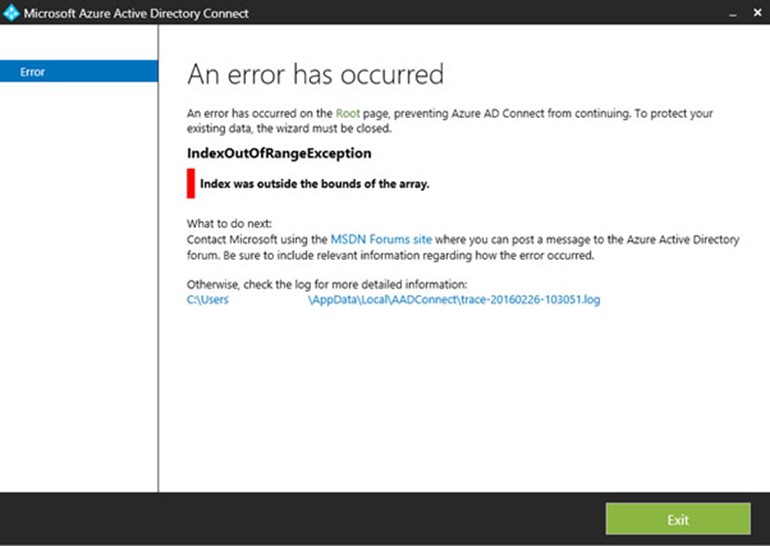
Feb 2016 Azure AD Connect Upgrade Fails – IndexOutOfRangeException resolution
I’ve been doing some work for a client recently who decided to upgrade their Azure AD Connect appliance to the latest February release. This was a prerequisite task for future work to follow. As an aside, it’s always nice to run the current version of the sync client. Microsoft regularly update the client to provide new features and improvements. A key driver for this client in particular was the fact that the new client (1.1.105.0 – Released 16/2/2016) will allow you to synchronise every 30 minutes, which is a welcome change from the previous 3-hour sync cycles.… [Keep reading] “Feb 2016 Azure AD Connect Upgrade Fails – IndexOutOfRangeException resolution”
